6 factors to focus on for successful EHR implementation
A research study by the American Medical Association reported that physicians spent 49.2% of their day time on EHRs and other desk work.
Physicians are facing a hard time in adopting this system which is speculated to have caused more burnout than providing actual medical care. On the other hand, patients are still not exposed to quality care and reduced costs as was expected from this technology.
Health IT innovators should come up with a new approach towards EHR system design and development to improve EHR usability by providers and patients alike.
Following are the 6 factors that should be considered to ensure successful EHR implementation and achieve its intended benefits:
1. Focus more on insightful data
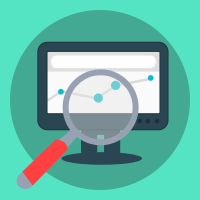
It is estimated that less than 25% of the data gathered in EHR systems is useful in assessing healthcare outcomes.
To improve the numbers above, it is essential that a right data model is implemented to display maximum relevancy and higher accuracy.
Advanced analytics is an area where EHRs can help to facilitate healthcare improvement and generate actionable insights. For example, following analysis can be run on EHR data to drive meaningful interpretations:-
- Patient flow data to improve productivity
- Root cause analysis data for interconnectivity issues
- Patient outcomes data with respect to the amount of money spent
- Demographic data analysis
- Custom reports generation based on key metrics
Another category of data that is crucial to quality healthcare is medical alerts. Alerts help in driving urgent care communication in the following scenarios:
- Generating reaction alerts based on drug combinations prescribed to an individual;
- Missed scheduled vaccination alerts etc.
2. Channelize development efforts efficiently
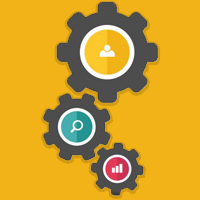
Medical technology solutions should conform with the regulatory steps and procedures that are essential to ensure patient privacy.
Technologists must ensure that PHI (Protected Health Information) strictly adheres to HIPAA compliance regulations. HIPAA ensures patient data privacy and security to safeguard transmission of data through the digital channel. It is thus mandatory to conform with the latest HIPAA compliance norms with regular risk assessment checks for a successful EHR implementation.
In addition to this, CIOs should strategize the next steps in healthcare development that promote meaningful use adoption.
As highlighted by Beth Israel Deaconess Medical Center CIO John Halamka, MD – there is a need to include market and clinician demands in healthcare development.
3. Design for humans
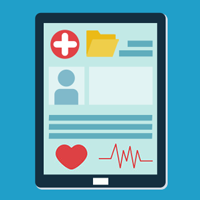
Minimalism
An EHR system should demonstrate the minimalistic approach for ease of use. Minimalism in design avoids extraneous content and distractions which consequently improves the efficiency of the system and reduces cluttering.
Following are the instances that describe how a minimalistic approach can be adopted for implementing an EHR:
- Screens for showing patient vaccination records do not require patient address. So, avoid displaying extraneous content on specific screens.
- To make a new patient entry, segment and categorize the details into smaller steps to reduce complexity and save user’s time. Also, avoid creating multiple hops to fill in the information.
Intuitiveness
A user should be clear of the current state of the system and which action would lead to what state. However, most physicians and patients find it very difficult to read the helping guidelines in an EHR system.
To solve this problem, follow the best practices for healthcare app design that promote better usability.
Applications should include clear call to actions, verbiage, with both textual and visual presentations to facilitate seamless user experience.
4. Lay the foundations of an interoperable technology
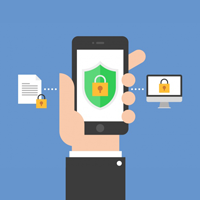
Health IT disruptors must invest to make a shift from legacy systems and innovate modern, secure, cross platform, mobile-friendly and easily accessible technology solutions.
Interoperability promotes mobile healthcare. However, it’s adoption so far has been inadequate probably because of the deep-rooted interests of businesses and vendors in this industry.
Interoperability empowers healthcare in several ways including:
- Improving care coordination
- Better clinical diagnosis and decision support
- Improving health care quality
Interoperability can be successfully implemented into EHR systems in the following ways:
- Abiding by a formal clinical data structure for information exchange at the application layer as laid down by the HL-7 standards.
- Accessing data through secure APIs across different organizations.
- Promoting experimentation and testing across mobile technologies as well as the trending technologies of today including IoT, cloud, wearable-tech and AI etc.
5. Provide customizations

A restrictive functionality does not allow the user to explore further possibilities. A revamped EHR system should be customizable by the user for easy use.
It can be flexible to:
- Generate custom reports for a specific month, day, year etc.
- Provide shortcuts to the most used operations.
- Support multiple measurement units for data entry.
- Offer advanced reporting engine to IT savvy executives for research and analysis preferably to facilitate accurate health outcomes.
6. Create a responsive mobile platform
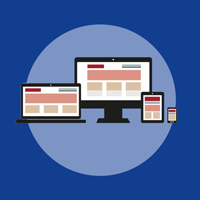
Increased usage of EHR applications over mobile platforms is a highly predictable trend in the future of healthcare IT.
Thus, responsive designs, or native components are must have today. A SOA based architecture that improves agility, reusability and extensiveness of an EHR should be adopted at the earliest.
Since more than 70% of the physicians use smartphones today, implementing a mobile EHR app will increase productivity in several ways such as:
- Providing the latest management functions, new appointment bookings etc.
- Streamlining medical processes due to easy access to patient data 24*7 to both providers and patients.
- Promoting point-of-care approach as most of the medical care happens at bed side.
Conclusion
Technology enabled healthcare has improved care coordination and care-giving considerably. However, EHR systems have been facing this battle of acceptance for a long time now and it’s time that healthcare technologists cultivate a fresh new human perspective towards EHR development to improve its adoption. Steps in this direction will improve EHR implementation tremendously.
What do you think is a way EHRs can be improved? If I missed out any, please feel free to share in the comments below!


